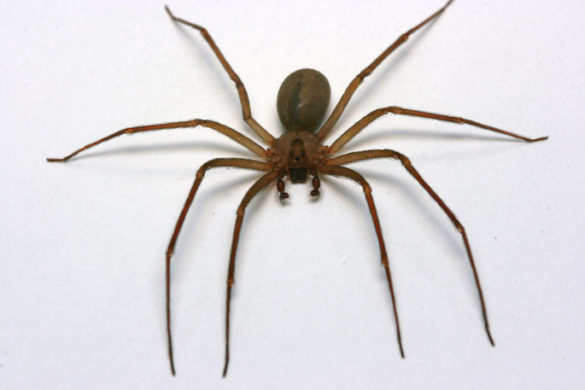Medical complications of brown recluse spider bites are uncommon but they can be severe, particularly in children, researchers at Vanderbilt University Medical Center (VUMC) reported April 19.
The hallmark sign of a brown recluse spider bite is a painful, blistering skin lesion. In rare cases the bite also can cause a severe illness called systemic loxoscelism, characterized by a blood clotting disorder and hemolysis, destruction of red blood cells.

Patients presenting with these symptoms often don’t know they were bitten. But loxoscelism should be suspected, particularly if patients live in parts of the Southeast and Midwest where the spiders thrive and especially if they are children, the researchers concluded.
“Children are much more likely to develop this systemic syndrome,” said Vanderbilt hematologist Jeremy Warner, M.D., M.S., senior author of the report published in PLOS ONE, a journal of the Public Library of Science. In severe cases, treatment may require hospitalization, blood transfusions and other supportive measures.
African-Americans also may be at higher risk, said Warner, assistant professor of Medicine and Biomedical Informatics.
“We were inspired to carry out this analysis after treating a patient with a particularly striking episode of hemolysis several days after a brown recluse spider bite,” he said. “He lost literally half of his blood supply over the course of 24 hours but was ultimately OK.”
Warner, who is from New England, had never seen a case of systemic loxoscelism before.
The vulnerability of children to the venom of the brown recluse spider was picked up during a review of more than 2.4 million patient records stored electronically at VUMC between 1995 and 2015 and de-linked from personal identifying information.
Called the Synthetic Derivative, the vast database allows researchers to search for phenotypes — clinical descriptions, lab measures, demographic and environmental characteristics — that are common to patients with the same diagnosis.
Led by first author Jamie Robinson, M.D., a General Surgery resident and post-graduate fellow in Biomedical Informatics, the researchers used this approach to identify 57 patients — the largest cohort of individuals with moderate to severe loxoscelism ever reported. Only a third of the patients knew they’d been bitten.
It may be possible to use phenotypes to pick out patients who don’t know they’ve been bitten and have not been formally diagnosed. In this way, Warner said, the study advances the goal of personalized medicine, to diagnose conditions earlier and provide the most effective treatment based on patients’ genetic and phenotypic characteristics.
Contributing to the study was Joshua Denny, M.D., M.S., professor of Biomedical Informatics and director of the Data and Research Support Center of the National Institutes of Health All of Us Research Program, formerly known as the Precision Medicine Initiative Cohort Program.
Other co-authors were Vanessa Kennedy, M.D., Youssef Doss and Lisa Bastarache.












